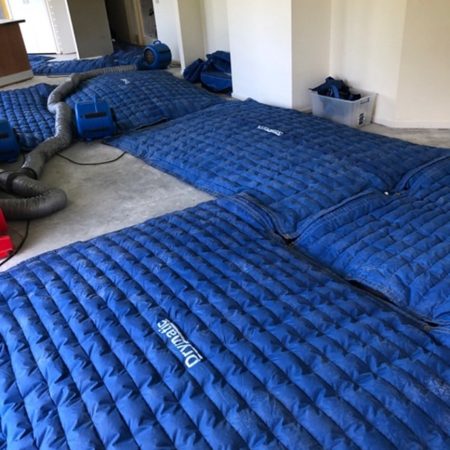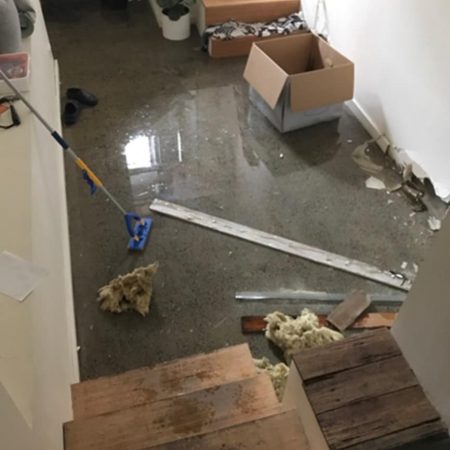Multiple Locations
Victoria, South Australia and Queensland
1300 278 676
Emergency Support
Available 24/7/365
Emergencies Aren't Planned
Victoria, South Australia and Queensland
Emergency Support
Emergencies Aren't Planned
Water damage can easily cause havoc if not given some timely attention. Damage can easily spread quickly and with further delay will surely cause secondary and more serious damages like mildew and mould infestations which will immediately expose occupants to respiratory health risk.
Water damage often leaves a devastating impact on contents and structure in properties. Burst pipes and faulty plumbing affects structures such as floors, ceilings, walls, cavities and baseboards. Removing visible water is easy but the real task is removing moisture you can’t see which can cause ongoing severe damage to your structural elements. Unseen water damage is gradual, it slowly seeps through layers of different material deteriorating anything in its path, therefore acting on water damage should be swift and decisive to save any further damage to structures or materials.
STORM are well prepared to deal with these seemingly overwhelming tasks of tracing unseen water and moisture content in different structural materials. Our highly trained staff are equipped with moisture monitoring tools, thermal imaging and the latest specialist drying equipment for a complete approach to your water damage problem and ensure your structure is back to pre-loss condition.









As per routine to all our restoration service, assessment is done outright to gauge the magnitude of the damage. Special instruments are used to map out the extent of the damage.
After the assessment has been carried out a detailed work plan is laid out, activities such as water extraction, drying, cleaning and restoration are done to specifically suit the extent of the damage. A flooding and water damage assessment report including the restoration service involved are also provided to clients in support of any claim to their respective insurance company.
Water extraction vacuum with improved airflow and vacuum presser are used to extract the maximum amount of standing water possible. Removing excess water is critical since this will significantly minimise secondary damages and will significantly escalate the drying process to the standard equilibrium moisture content level.
Biodegradable or environmental friendly antimicrobial treatment are used to sanitise, control and prevent the spread of bacteria to other adjoining surfaces thus preventing secondary problems like mildew and mould formation. We also use treatments to eradicate wet odours and air filtering units are used in areas with poor air quality.
For efficient and complete drying we use equipment to control airflow within the affected vicinity. Air movers, dehumidifiers and other equipment are used in accordance to the extent or categories of the damage. By controlling air flow we are able to efficiently dry wet carpets, water damaged underlay and other permanent structures like timber and concrete more economically. Where needed, we lift carpets and expose the underside to our drying equipment for a comprehensive drying work.
For drying walls, beams, joints and other structures we use a more advance drying technique to dry such surface which cannot be dried by standard air movers.
Contents and other valuable belongings are removed from the wet area before we commence with restoration to restrict the extent of the damage. Heavier goods are elevated to avoid water absorption. Contents are assessed and evaluated if they are restorable or non-salvageable. We also take rugs offsite for cleaning and where deemed necessary, we can also facilitate the removal of damaged carpets and underlay and/or re-lay of new carpets.
Our Certified Restoration Technicians are geared to carry out structural restoration from demolition to the restoration of affected structures. Water damaged roof or ceilings and water ingress issues are also within our scope of service. We have a network of dedicated professional trades that are accustomed to water damages and can best manage repair and construction works.
Throughout the restoration works. constant monitoring is done, from cleaning works, mitigation, remediation through to handover to the Builder. Necessary alterations are made after every monitoring visit. Our clients are daily updated and well informed during the progress and issues are reported upfront along with the accompanying detailed suggestion on how to manage and redeem the issue.
We provide a detailed final report of the work done and the justification behind our every activity. This report can assist one with insurance claims with a markedly swifter and smoother settlement process. We are also happy to work with assessors and loss adjusters and have a understanding of their requirements.